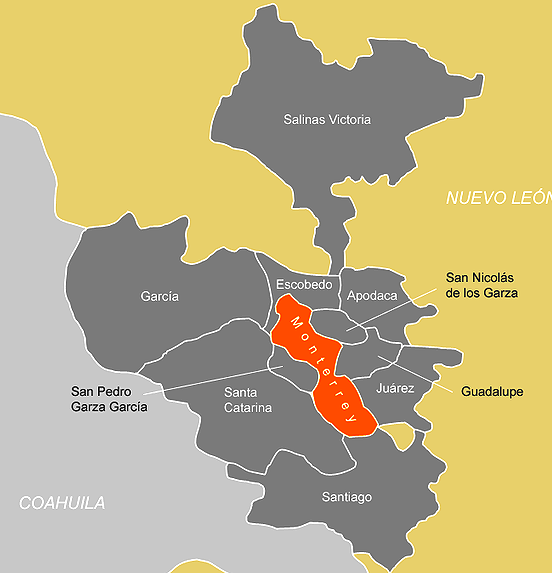The city of Monterrey was founded in 1596 by an expedition of twelve families led by Diego de Montemayor. During the years of Spanish rule, Monterrey remained a small city, which facilitated trade between San Antonio (now in Texas), Tampico, and from Saltillo to the center of the country. In the 19th century after the Mexican War of Independence, Monterrey rose as a key economic center of the newly formed nation thanks to its balanced ties to Europe (with its connections to Tampico), the U.S. (with its connections San Antonio), and the capital (through Saltillo). In 1824 the New Kingdom of Leon became the State of Nuevo Leon and Monterrey was selected as its capital. During the last decade of the 19th century, the city gained access to railroads, which promoted industrial growth and development. The city is primarily known for its industry and commerce. As a producer of steel, glass, cement, auto parts, and beer, it is a major financial center in Mexico. It is an important industrial and business center that hosts an array of transnational conglomerates such as Cemex (world’s third largest cement company), FEMSA (Coca-Cola Latin America), Alfa (petrochemicals, food, telecommunications, and auto parts), Axtel (telecommunications), Vitro (glass), Selther (leading mattress firm in Latin America), Gruma (food), Alestra (telecommunications) and Banorte (financial services). Monterrey is located in the Santa Catarina Valley, approximately 150 miles south of the Texas border, and lies about 500 m above sea level. Often referred to as city in the mountains, its landscape is dominated by a striking mountain peak, the city’s landmark, called Cerro de la Silla (Saddle Mountain). Some people say that the form of this hill is not natural. They say it was made by a local businessman who lost a coin at the top of the hill and kept digging until he found it! The state territory has extreme climate conditions with mainly hot temperatures. It has a climate variety because it is formed by three physiographic regions: the North Coastal Plain, the Sierra Madre Oriental and the Mesa del Norte. The annual average temperature varies from 14° C in the Sierra Madre Oriental, to 24° C in the North Coastal Plain. The average rainfall varies from 1,010 mm at the station of La Boca in Villa de Santiago, to 217 mm in the municipality of Mina, N.L. The city of Monterrey has a dry desert type of climate with rainfall during the summer. Its annual temperature is 21° C and its average rainfall reaches 720 mm per year. The coldest months are from December to March. The temperate climate (with predominant cold wind) is in the months of April, September, October and November. The months with the highest temperatures are May, June, July and August. Rainfall season is August, September, and October. Today, Monterrey is the third-largest metropolitan area in Mexico with a rather large population. The central downtown has a population of about a million, but the Metropolitan Area, which includes all of its adjacent municipalities, brings its total population to 3.8 million. The city iis divided into zonas, which are then divided into different neighborhoods or colonias. Nuevo Leon has a total of 51 municipalities and the Greater Metropolitan Area (Area Metropolitana de la Ciudad de Monterrey) consists of the following nine: Apodaca, Garcia, San Pedro Garza Garcia, General Escobedo, Guadalupe, Juarez, Monterrey, San Nicolás de los Garza, Santa Catarina 
-
Subscribe
Subscribed
Already have a WordPress.com account? Log in now.

